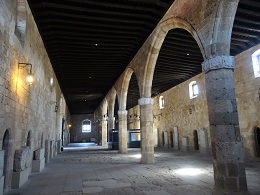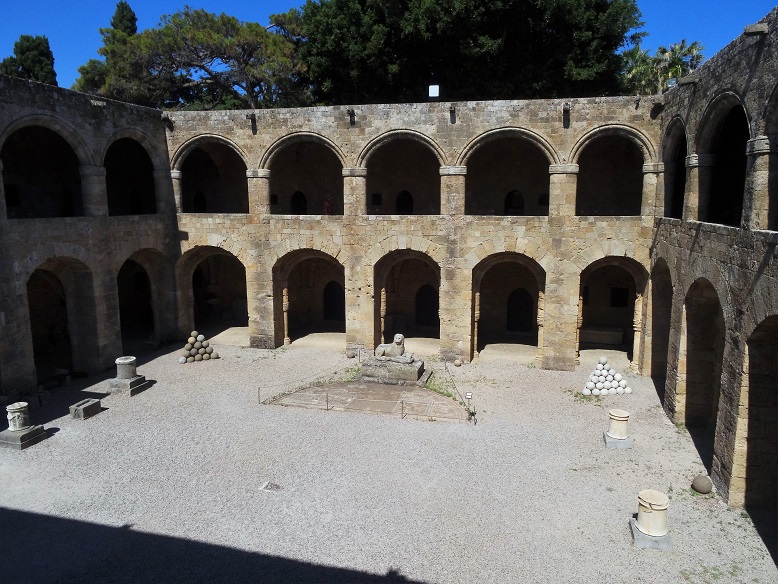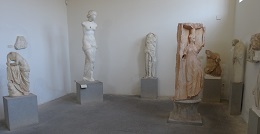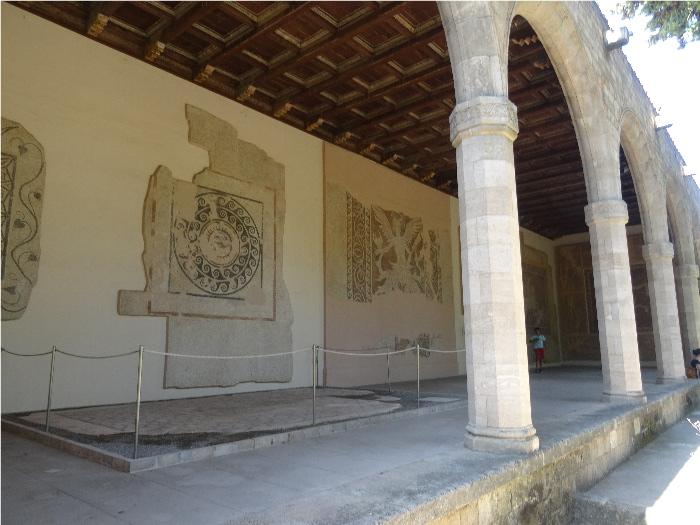|
Greece
Rhodes
Archaeological Museum

Summary
The Archaeological Museum of Rhodes is housed in the building that was the hospital of the Knights of Saint John known as the Knights Hospitallers. Construction of the hospital began in 1440 and was completed in 1489. It was carried out over the remains of a Roman building. The Museum contains a number of collections of archaeological artifacts from various parts of Rhodes and the neighbouring islands. These include burial finds dating back to the 9th century BC, and sculptures and mosaic floors from the classical, Hellenistic and Roman period. One of the famous pieces contained in the museum is the marble statue dating from the first century BC of Aphrodite Bathing.
|
The Archaeological Museum of Rhodes is located at the centre of the Medieval Town, adjacent to Knights Street. It is housed in the building that was the hospital of the Knights of Saint John known as the Knights Hospitallers.
The Knights of Saint John were a Christian military order formed in the 11th century in order to care for the poor and sick pilgrims in Jerusalem. In 1309, they acquired Rhodes, which they held until 1523 when, following a six-month siege by Süleyman the Magnificent, the knights were forced to leave Rhodes. They then moved to Malta and established themselves in Valletta and the Grand Master Palace.
During the Ottoman era (1523-1912) the museum building was used as a hospital then also as a barracks. It underwent restoration from 1913-18 and became the Rhodes Archaeological Museum in 1914.
Construction of the hospital was begun in 1440 over the remains of a Roman building and was completed in 1489. Built along similar lines to Byzantine hostelries it is one of the few examples of Gothic architecture to be found in Greece and is part of the city’s UNESCO World Heritage listing.
The Museum contains a number of collections of archaeological artifacts from various parts of Rhodes and the neighbouring islands.
Entry to the building is into an inner courtyard, surrounded by a galleried upper story which is accessed by an outside stairway.

On the ground within the courtyard are a number of stone fragments and stacks of cannonballs, together with relics from various sieges and military campaigns. Also, to be seen are a number of gravestones and funeral altars.
The upper floors were used as the hospital for the sick and this is where the hospital beds were located. The room is large with minimal decoration and covers the length and width of the building, it has a high ceiling supported by columns.

The ground floor was used as stables and a warehouse. This led onto a large courtyard, which was surrounded by a double portico following typical Gothic architecture.


In the courtyard is a stone statue of a lion which has its front paws on a bull’s head.

Leading off the courtyard are several rooms containing exhibits.

The displays also contain burial finds dating back to the 9th century B.C, and sculptures and mosaic floors from the classical, Hellenistic and Roman period. These include the marble statue of Aphrodite Bathing, which was recovered from the seabed off the west coast of the city of Rhodes from the early Hellenistic period (323 BCE-31BCE) The statue dating from the first century BCE is known as the Rhodes Venus. Statues like this adorned the interiors of the homes of the wealthy.


Also, to be seen are and funerary slabs from the period of the Knights and numerous chalices. There is also a collection of earthenware, urns and pots, altars, sarcophaguses and other objects from archaeological excavations.

Leading from the main building is an out court which then leads in to the gardens.

Within these are a pavilion and a site marking the place of a burial dating back to 1700 BC, this held a helmeted warrior and his horse, which has been reconstructed. Also displayed are a number of wall-mounted mosaics.


|





